Steller’s Jays: Clever Black and Blue Birds
Updated: Nov. 08, 2023
Discover what makes the Steller's jay so special, including their social nature, clever tricks, and striking black and blue feathers.
On This Page
What Does a Steller’s Jay Look Like?
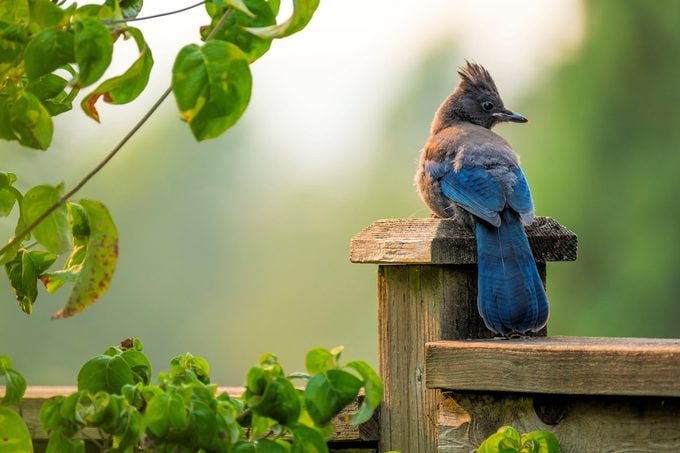
Smart, gregarious and handsome, the black and blue Steller’s jay is named after German naturalist Georg Steller—not for their stellar looks. He first classified them on an expedition to an Alaskan island in 1741. From a distance, the Steller’s, which is related to the blue jay, may look like just a dark crested bird. A closer view reveals its striking dark head and shoulders contrasted with its deep blue body and tail.
Don’t miss beautiful blue jay photos you need to see.
Are There Different Kinds of Steller’s Jays?
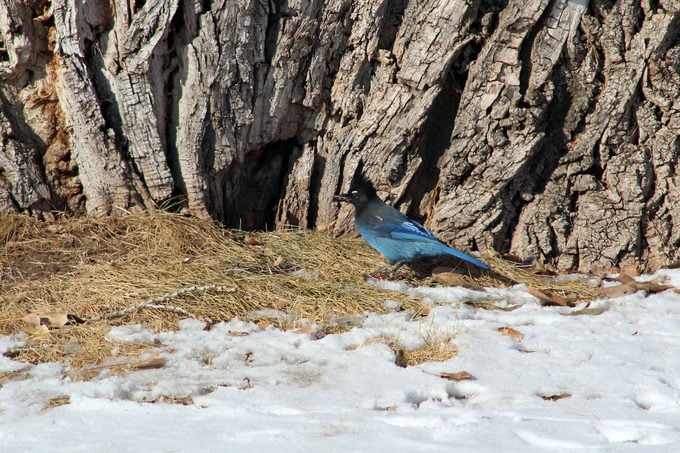
“This Steller’s jay (above) hung around our place last winter. But it looks different from the ones I saw in the California redwoods. Are they two different species?” asks Birds & Blooms reader Laurie Penrod.
Birding experts Kenn and Kimberly Kaufman write, “That’s a good observation. Steller’s jays in California and elsewhere near the Pacific coast have dark blue streaks on the black forehead, while those in the Rocky Mountains have white forehead stripes and a white spot over the eye. Those in your area of eastern Idaho are more likely the latter type.
In the past, these were considered just regional variations, but a recently published study suggested that Steller’s jays in the United States actually make up two different species. Although this isn’t official yet, it’s likely they’ll be “split” in the near future.
Steller’s Jay Range and Habitat
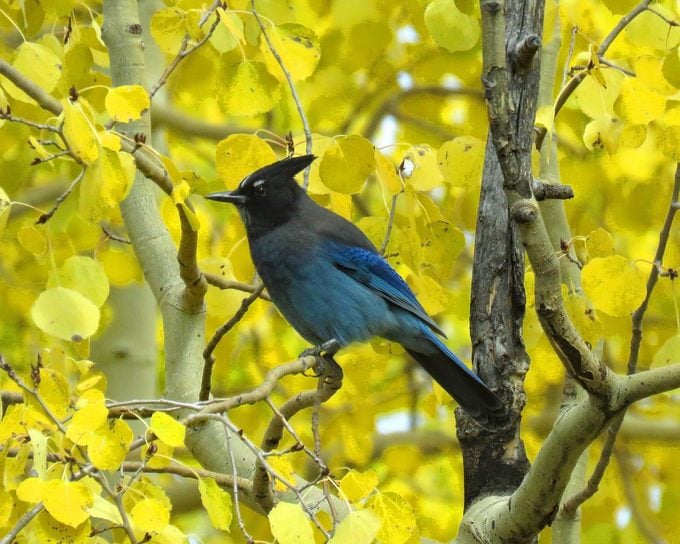
Steller’s jays are found year-round in a variety of environments in western North and Central America, from Alaska to Nicaragua. They frequent campgrounds, picnic grounds and yards. There are multiple subspecies in different environments. As Kenn and Kimberly noted, the subspecies mainly differ in the pattern of white or blue markings on the head.
“Steller’s are one of my favorite birds to watch. I love their dusty blue color against the deep green pines in the mountains of New Mexico,” says Birds & Blooms reader Pat Northington of Austin, Texas.
Did you know—Canada jays are curious, cold-hardy birds.
What Foods Does a Steller’s Jay Eat?
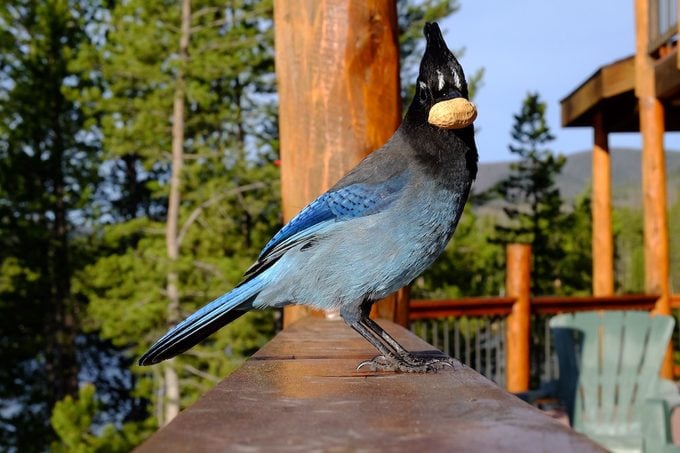
To attract Steller’s jays to your own feeder, offer peanuts, black oil sunflower seeds, suet or fruit. Pine and oak trees are alluring cover and provide additional food and nesting sites.
Steller’s are opportunistic birds, eating any leftovers people may leave behind, insects, berries, nuts, bird eggs and even small animals such as lizards. They hide food for later retrieval as winter approaches, gathering nuts and seeds in their throats and stuffing the nourishment into nooks and other hiding spots for later in the year.
Steller’s Jay Intelligence
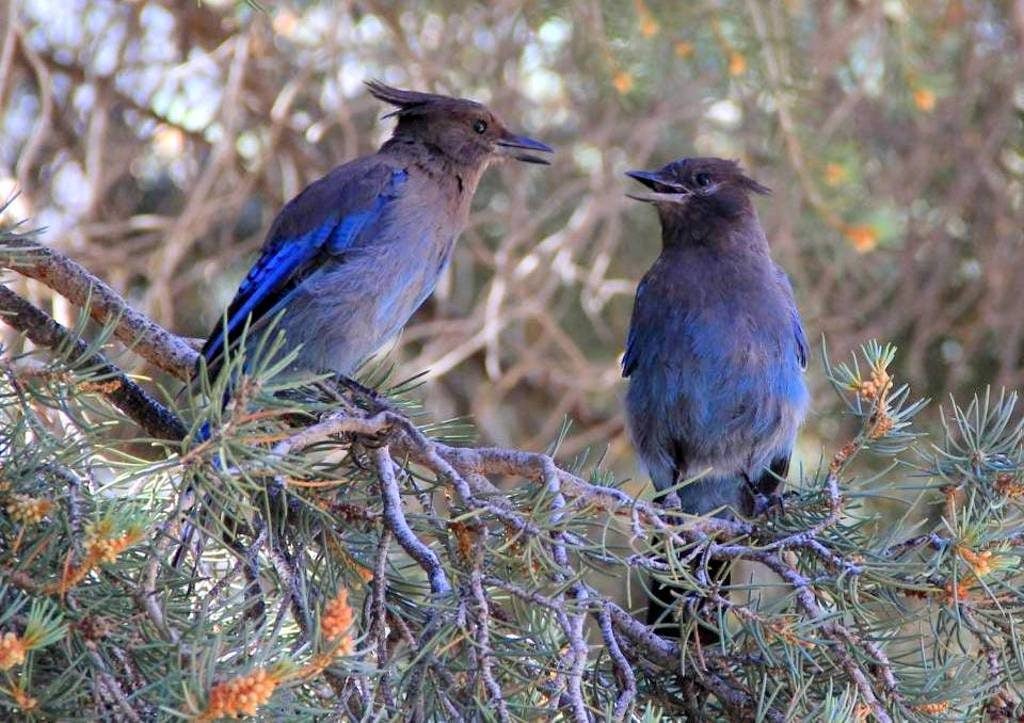
Jeff Black, a Department of Wildlife professor at Humboldt State University based in Arcata, California, has been studying Steller’s jays since 1998. These brightly colored jays belong to the corvid family, known to be among the most intelligent in the avian world. That, along with the birds’ sociable nature, makes it easy to observe them.
“Here in Arcata, California, jay pairs stake claim to our yards, both front and back, and they stay all day and all year,” Jeff says. Researchers fit the birds with leg bands, each with a different color combination to identify them. “Jay pairs readily come to bird feeders, so we can see who’s who and who they are hanging out with or chasing off,” Jeff says.
Find out why the blue jay range is expanding westward.
Steller’s Jay Call
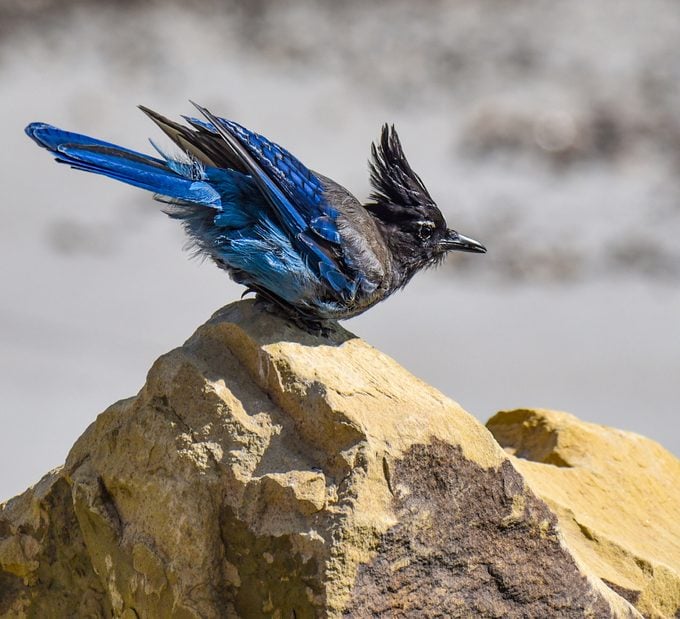
These clever and social jays communicate with other birds in a variety of ways. Jeff says, “They have dozens of call types conveying different information.” These include harsh rattles and melodious notes. “Steller’s jays also imitate calls made by hawk species they live with,” he says.
In winter, they use those calls to stir things up and scare other birds away from feeders so all the food is left to them. Using their voices in another way, they team up to scold and chase away predators, including the great horned owl. Ornithologists call this group behavior mobbing.
“This Steller’s jay (above) is my favorite all-year round backyard visitor. He’s very smart and entertaining, imitating various birds, especially red-tailed hawks, and managed to trick me!” says Birds & Blooms reader Dagmar Teleky.
Learn how to identlfy California scrub-jays and Florida scrub-jays.
Steller’s Jay Nest and Eggs
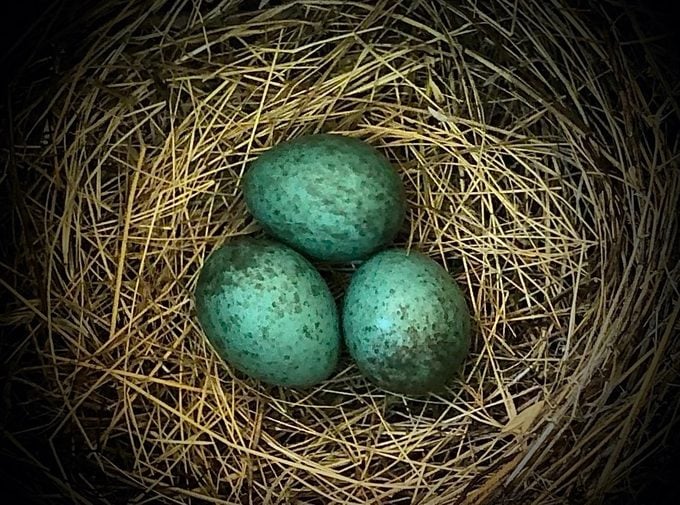
Adults likely mate for life. They engage in courtship feeding and show off by throwing their crests and vibrant blue feathers around. A pair gathers pine needles, twigs, grasses and mud during the breeding season. Then they construct a cup-shaped nest where the female lays and incubates up to six blue-green eggs with dark brown spots.
Next, learn how to tell the difference between bluebirds vs blue jays.
